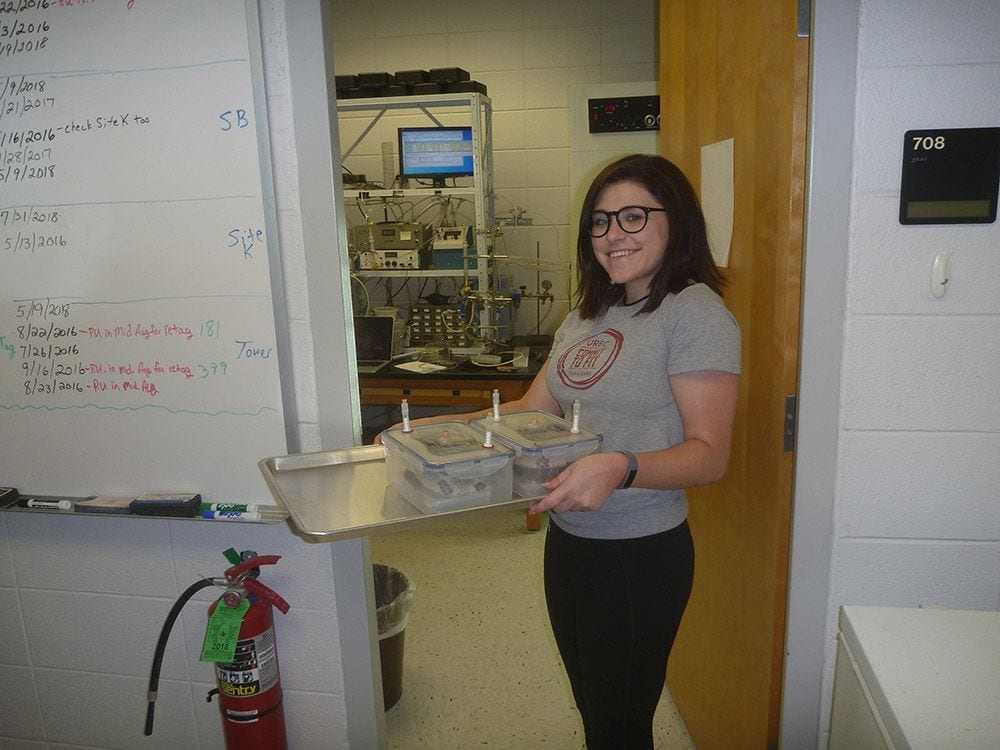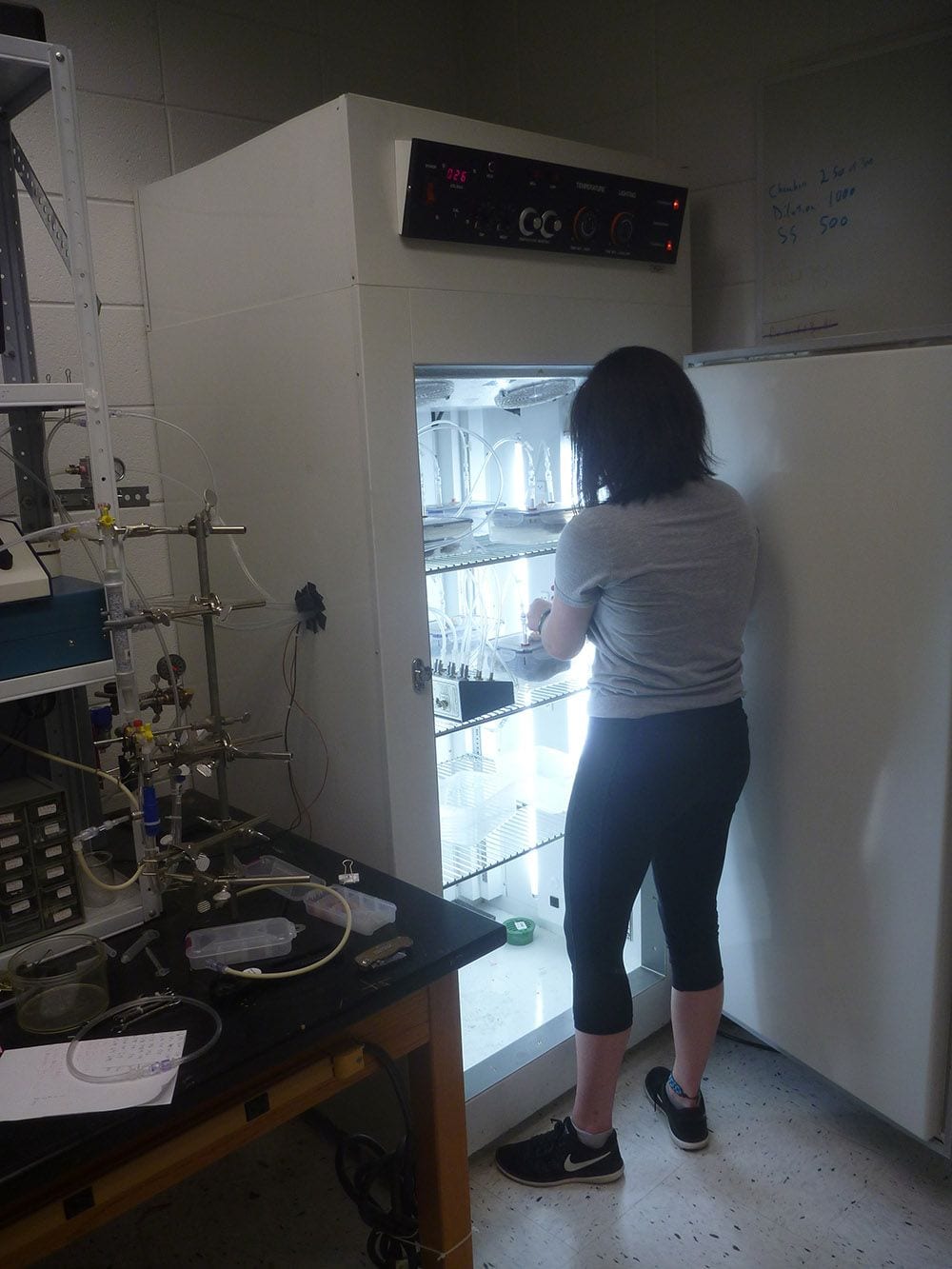
Here, Caylie carries timber rattlesnakes in their chambers…very carefully…to be hooked up to equipment.
Many people rate snakes among their biggest fears, but for senior biology major Caylie Funk, working with timber rattlers is just part of the job. Caylie began her research on rattlesnake metabolic rates over the summer, and was immediately faced with a steep learning curve when it came to equipment, repairs and methodology. But thanks to her own dedication and a great research team, she is now ready to engage with her honors research in an even more expert way as she continues her work into the fall semester.
First, I should begin with a quick explanation of my research. After an individual ingests a meal, there is a spike in metabolic rate due to digestion, absorption and the subsequent growth; this process is called Specific Dynamic Action (SDA). My research will evaluate the SDA response in timber rattlesnakes after giving them a small, medium or large meal. We will do this by placing the snakes in a metabolic chamber and recording their CO2 output and O2 intake. The equipment we use is really fascinating because it allows us to see the snakes breathe in real time. With timber rattlesnakes, we must record their metabolic rate for fourteen days after giving them their meal. I will visit the lab every day to restart data collection and recalibrate the very sensitive O2 meter. Based on the eventual findings of my study, future work can focus on the energetic costs of digestion and growth from total SDA response. This could lead to a better understanding of how ingested energy is used for processes such as lean growth (muscle mass) and storage (fat).
This summer research period was a huge learning experience. The respirometry equipment we use for my research is complicated and sensitive to errors, so the first two-thirds of this summer were utilized as a training period. Human anatomy instructor and Ph.D candidate in Dr. Beaupre’s lab, Jason Ortega, has spent an extensive amount of time teaching me, answered a million questions and even allowed me to take part in recording data in his last few trials with cottonmouths. The training was extremely beneficial and I am now able to run my experimental trials without assistance, at least for the most part, as working with venomous snakes requires a more experienced hand (i.e. not an undergraduate).
Before jumping into official trials, we decided to perform a couple of trial runs to determine the appropriate size of chamber, what size mice to use, and if the snakes will eat in the chambers. Believe it or not, snakes can be very picky. We first tried a mouse size called “fuzzy,” which is a relatively small size and allows us to get closer to the intended meal mass. However, we ended up using a comically large number of fuzzies for one snake (11 per snake). For our smallest guy, this was too many morsels for him to eat and he only ate 6 of the 11. Another snake refused to eat in the chamber and we had to remove him and feed him in a separate location, in which he did finally eat. In addition to picky snakes, we noticed some of the tubing in the equipment was beginning to crack, so we needed replacement parts.
After the first trial, we ordered new tubing and parts for the complex respirometry set up and Jason (the expert on the equipment) did most of the repairs. We also ordered a slightly larger size of mouse (“weanlings”) to reduce the number of mice we give each snake. Since it took a while for the parts and mice to come in, we are currently about to begin a second practice run, and I am very excited to see how it goes. Finally, in addition to training, Jason and I have been working on a “user manual” for the respirometry equipment so future users will not have to track down me or Jason for guidance. The process of writing the manual allowed me to gain a better understanding of the processes and machinery and I was able to become proficient in the equipment relatively quickly. As long as things go as planned we should begin official trials in mid-September!


